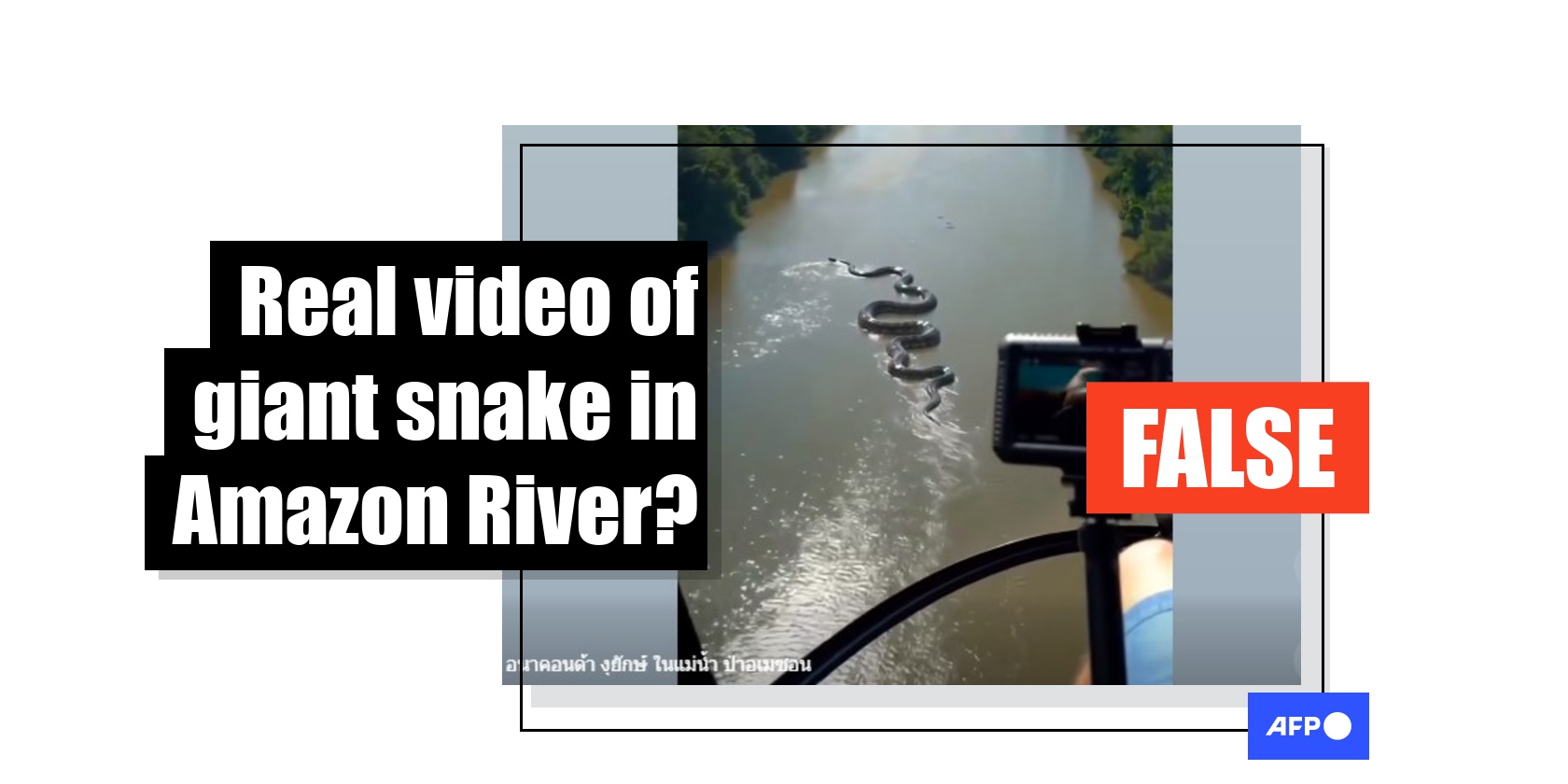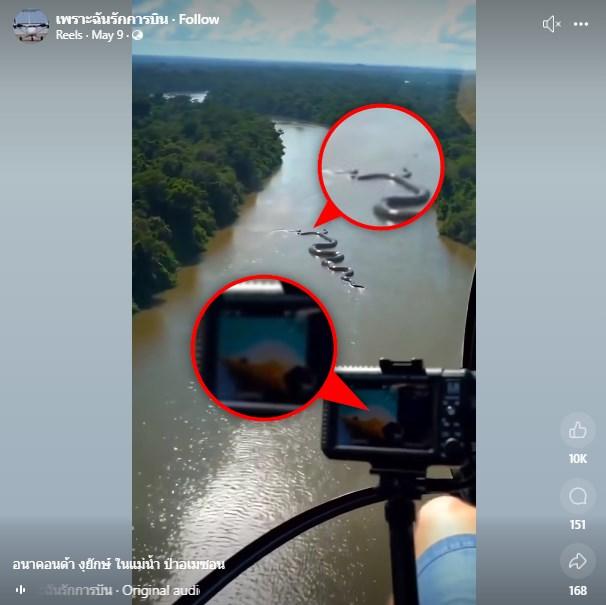
AI-generated video of 'giant anaconda' misleads online
- Published on May 23, 2025 at 11:40
- 2 min read
- By AFP Colombia
- Translation and adaptation Pasika KHERNAMNUOY , AFP Thailand
A purported video of a giant anaconda swimming in the Amazon River has been viewed millions of times across social media posts in multiple languages but it is in fact generated with AI. The video contains visual inconsistencies -- a hallmark of imagery made with AI -- while snake experts said the creatures are unable to float on the surface of water because of their large size.
"A huge anaconda found in the Amazon River," reads the Thai-language caption to a Facebook reel published on May 9, 2025, where it has since racked up one million views.
The video appears to be aerial footage of a massive serpent slithering on the surface of a river.

The same clip racked up millions of views alongside similar claims across posts in Spanish, English, Burmese, Indonesian, Korean, Hindi, Bengali, Turkish, Portuguese, and Russian.
However, the video contains inconsistencies indicating it is a fabrication.
A reverse image search on Google found the same video shared on Instagram on May 8 with the hashtag "AI" in its caption (archived link). The user also mentioned the Instagram accounts of two separate AI image generation programmes, Pollo and Kling (archived links here and here).
The user went on to share more AI-generated videos of a giant anaconda in subsequent posts (archived links here and here).

Despite the meteoric progress in Generative AI, errors still show up in AI-generated content. These defects are the best way to recognise a fabricated image.
One part of the footage shows the serpent with two heads, one of which disappears towards the end of the clip.
Meanwhile, the camera's on screen display depicts a different scene.

Fernando Ignacio Ortiz, an ecologist and professor at the University of the Amazon in Colombia, said anacondas were unable to swim on the water's surface due to their weight (archived link).
"They always remain deep underwater when swimming," he told AFP.
Diego Huseth Ruiz, an expert on reptile and amphibians from the same institution, pointed out that anacondas are known for their large diameter rather than extreme length contrary to what is shown in the video. (archived link).
"The snake in the video should be at least 20 metres long, which is clearly an exaggeration," he said. "A snake of that size couldn't move as quickly as it appears to in the footage."
Green anacondas -- the largest snake in the world -- can grow up to nine metres long, measure between 50 and 60 centimetres in diameter, and weigh as much as 250 kilograms (archived here and here).
AFP has previously debunked AI-generated images of creatures passed off as genuine, including a lotus mantis, axolotl, and giant lobster.
Copyright © AFP 2017-2025. Any commercial use of this content requires a subscription. Click here to find out more.
Is there content that you would like AFP to fact-check? Get in touch.
Contact us




